Zilles on Buda and CAM
Loretta Zilles is as intimately knowledgeable about the Castlemaine Art Museum as she is about Buda Historic Home and Garden, where she is the house manager and curator. Earlier this year we invited Zilles to digitise aspects of the Buda collection as part of the Digitisation Roadshow program funded by Creative Victoria, continuing a long and fruitful relationship between Buda and CAM. In this reflection, Zilles sheds light on the fascinating formal, informal and creative interconnections between these august Castlemaine institutions.
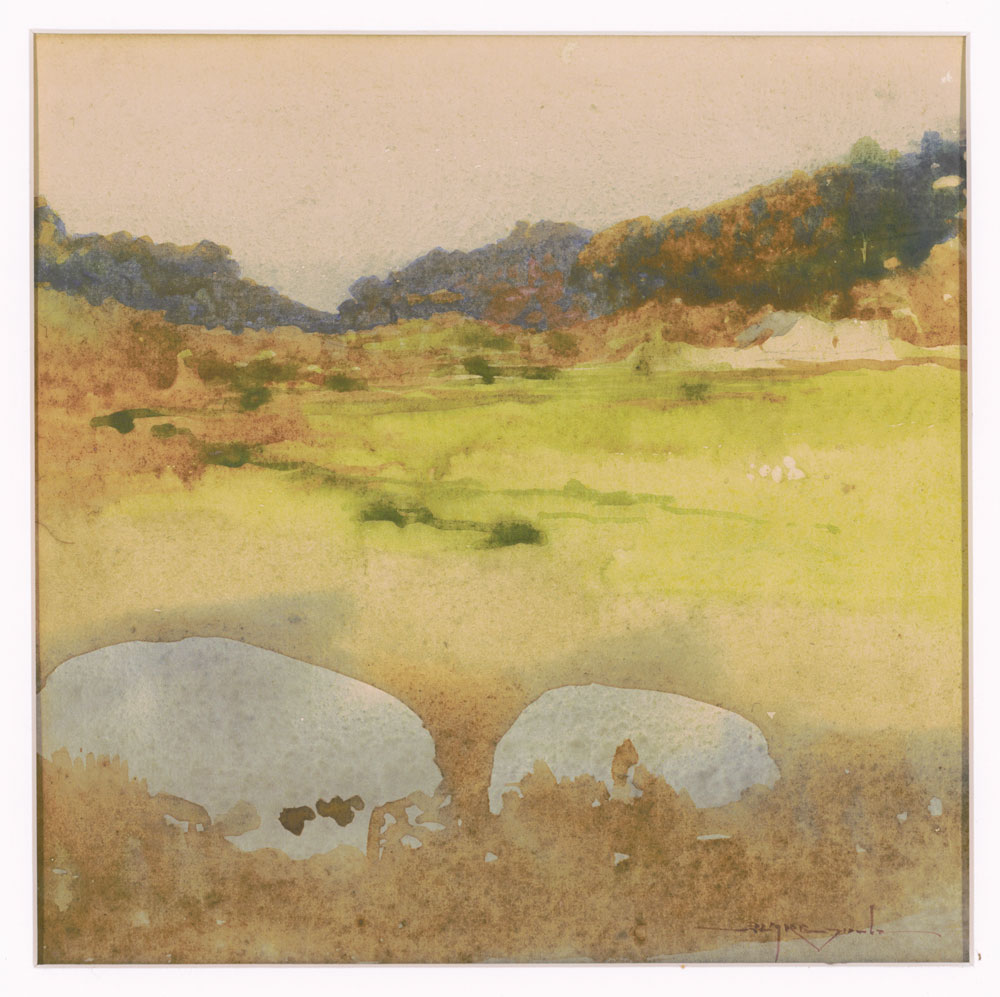
Zilles on Buda and CAM
The Leviny family of Buda, in Castlemaine, had a close association with the Castlemaine Art Gallery and Historical Museum (CAGHM) in the first 60 years or so after its establishment in 1913. Their own assemblage of artworks and decorative arts acquired for their family home grew alongside the gallery’s collection, with a similar strength in works by Australian artists.
From the early days, Castlemaine had an active arts community. The Leviny patriarch, Ernest Leviny, was involved in community affairs from the pioneering days. His family continued with this through to the mid-twentieth century, when his five unmarried daughters (only one of the six had married) still resided in the family home. They had many influential friends and acquaintances, including artists, politicians and community advocates.
The contribution of the Levinys to CAGHM included Mrs Bertha Leviny’s provision of a small shopfront in Lyttleton Street to display the early collection between 1913 and 1915; the eldest daughter, Mary, being on the establishing committee; and sisters Kate, Gertrude, Dorothy and Hilda giving years of service either on the committee or in support roles, along with their brother, Ernest Jr, after his return to Castlemaine during the 1930s. Ilma Leviny also maintained a keen interest, and her husband, Dr James L Thompson, served as CAGHM President from 1927 to 1941.
The collection of more than one hundred artworks at Buda (excluding those by family members) has a focus on Australian, particularly women, artists of the early twentieth century. It is clear that as soon as money was freed up to spend after the death of their father in 1905, the Leviny women commenced acquiring contemporary artworks for their home, patronising both male and female, established and emerging artists.
The first documented purchases made by Mary and Dorothy Leviny were two watercolours by William Blamire Young from an exhibition held at the Guild Hall, Melbourne, in 1910. These was followed with oils by Walter Anderson, Bertha Merfield and George Colville, along with watercolours by MJ MacNally and Harold Herbert, most likely purchased from exhibitions held at the Athenaeum and Guild Hall galleries in Melbourne.
The most active years of collecting for the Levinys was during the 1920s and 1930s. Many of those purchases were made by Kate, who had a good eye for choosing artworks, according to Mrs Beth Sinclair, former Director of CAGHM. Kate had spent time in Sydney during the mid 1920s with a family friend, Ursula Ridley Walker, a talented artist from Tasmania. With the lively artistic milieu in Sydney at the time, Kate developed a keen interest in printmaking, particularly the work of women artists involved in this increasingly popular artform. Prints by Margaret Preston, Maude Sherwood and Mildred Lovett were purchased from the Grosvenor and Macquarie Galleries in Sydney around this time.
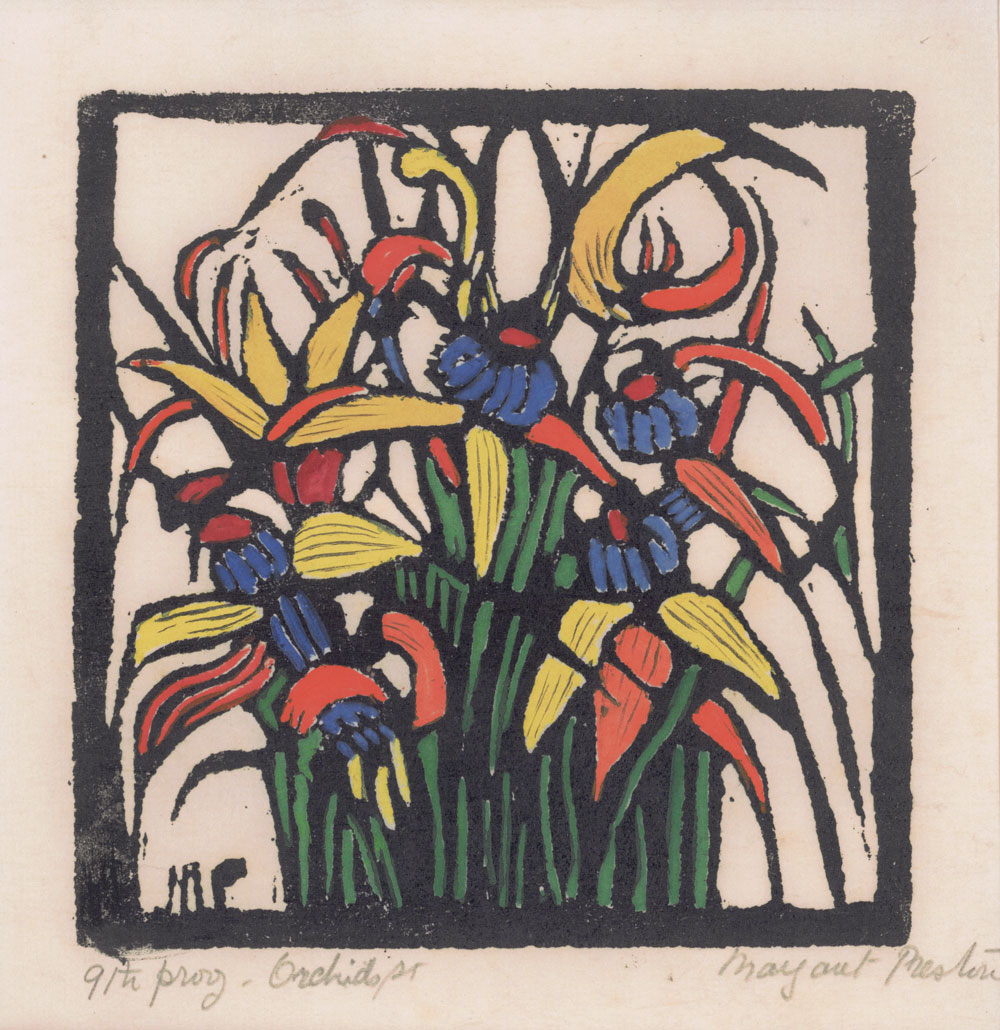
Buda and the Castlemaine Art Museum (CAM) collections both have a number of works produced by local artists who were part of the push to establish the Castlemaine Art Gallery and Historical Museum. These include works by Elsie Barlow, Alice Newell and Jorgen Frank. Other artists represented in both collections include Jessie Traill, Ethel Carrick Fox and Arnold Shore.
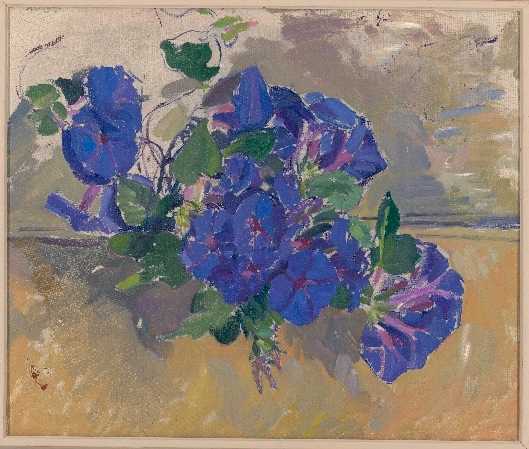
Some other interesting connections
In the early 1890s Mary Leviny attended painting classes with Heidelberg School artist Jane Sutherland, who had a studio at the Grosvenor Chambers in Collins Street Melbourne, along with Tom Roberts. It is likely Leviny would have crossed paths with other emerging artists in this circle including the Hake sisters and Jessie Traill. Mary met up with Dora (Meeson) Coates during her travels to Britain and Europe in 1936.
Elsie Barlow (nee Hake) and her sister, Dora Serle, had also been students of Jane Sutherland and later attended the School of Art at the National Gallery of Victoria. Elsie came to Castlemaine as the wife of the Police Magistrate and was a main driver behind the establishment of CAGHM. She was active as an artist throughout her adult life.
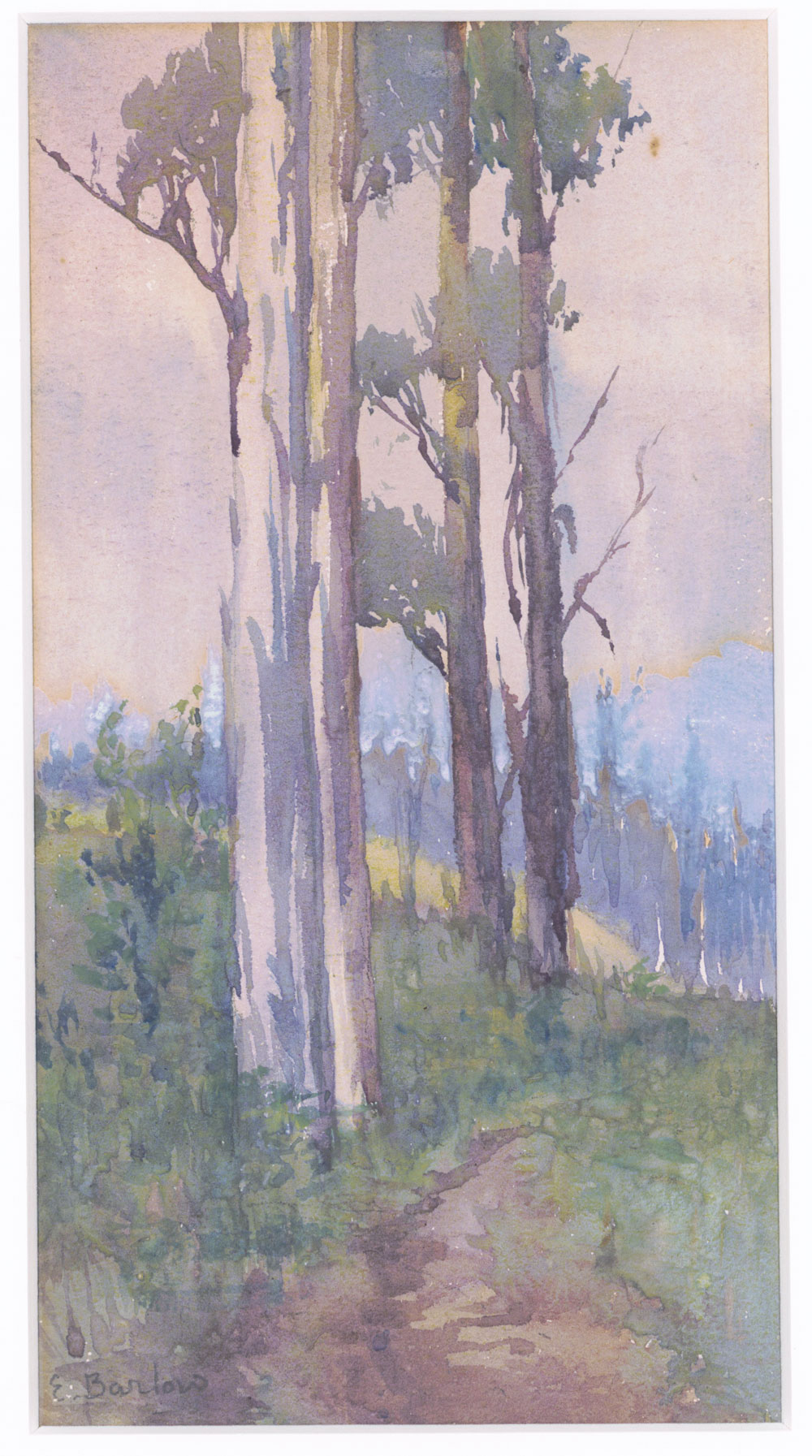
Winnie Brotherton, another founder of CAGHM, also had connections in artistic spheres. Her sister, Alice, an amateur artist and poet, was involved with the Bohemian Melbourne group the Buonarotti Club in the 1880s, with links to the famous Heidelberg School artists. Alice married G Rodney Cherry, also an affiliate of this group of artists. Unfortunately, she died early; her daughter, Anice (Nan) Cherry, was raised by her Aunt Winnie.
Winnie was a member of the Castlemaine Fields Ramblers (as was Mary Leviny), and had correspondence with Baron von Mueller, Director of the Royal Botanic Gardens in Melbourne, regarding the identification of local wildflowers.
Alice Newell (nee Waterhouse) was a friend of the Levinys since their Castlemaine schooldays, attending both the Castlemaine Grammar School and art classes at Bendigo School of Mines in the 1890s, as did the Leviny women. She also attended the South Kensington School of Art in London for a short time, 1898-99. In 1903 she married Lieut. Col. FS Newell, a Melbourne solicitor, who served as the first President of CAGHM from 1913 to 1926. She came into her own as an artist later in life.
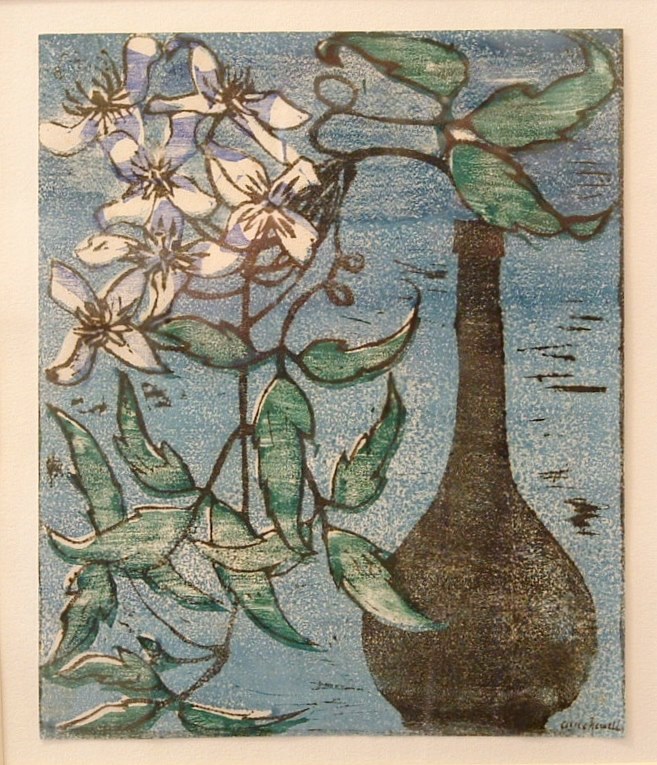
Jorgen A Frank served as the first secretary on the CAGHM committee. A local boy from Vaughan, it is likely he studied art at the Castlemaine School of Mines with the Levinys. Both Buda and CAM collections have a number of etchings and watercolours produced by Frank.
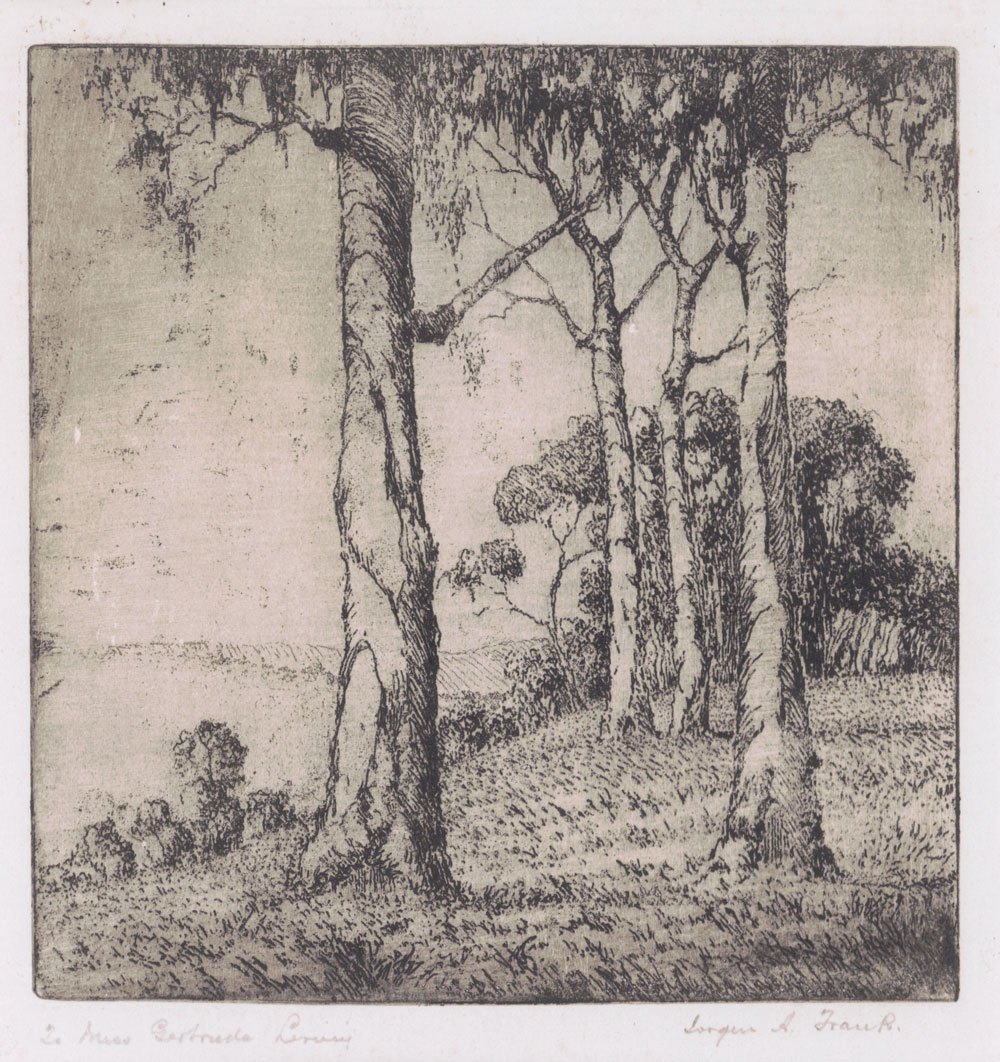
In 1970 the Levinys’ home, Buda, was purchased by the Trustees of CAGHM with financial assistance from the Victorian State Government. It was Hilda Leviny’s wish that the property be kept under the custodianship of the Trustees for the benefit of the community. On her death in 1981, the contents and chattels within the house were bequeathed also, thus completing the circle of nearly seventy years of affiliation between the gallery and the Levinys of Buda.
Lauretta Zilles
October 2020